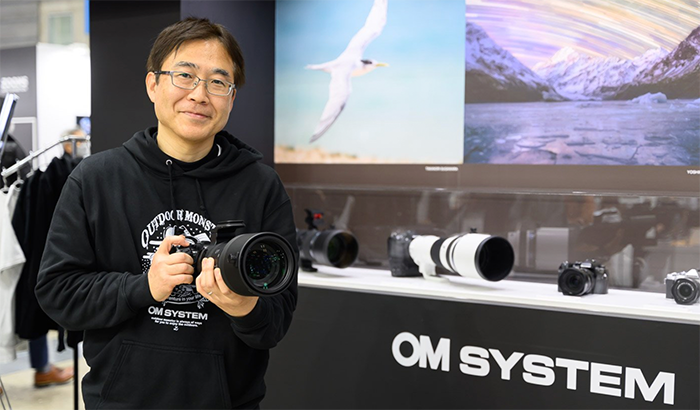Olympus Interview at IR: “we can expect an increased pace of new-product development and announcements”

Imaging Resource had a chat with Olympus manager Masanori Sako and he once more confirmed Olympus camera division is not for sale:
“We can clearly say that we have no plans to sell our business, despite the rumors…The consumer business really leads in developing new technologies for us, that are then sometimes used in other divisions, like medical and life science products. Our role besides our own [imaging] business, is really to lead technology and innovation for the entire company. So yes, we will continue this business.“
- The coronavirus pandemic is having modest impact on Olympus’ production ability, but demand has been down as well; the two more or less balance out (bottom line: continued good availability of Olympus products at retail)
- Olympus’ move of production from China to their factory in Vietnam is now complete; we can expect an increased pace of new-product development and announcements as a result
- The E-M1 Mark II will remain in the market alongside the new E-M1 Mark III (but strategy will vary, depending on national and regional markets). This is good news, as the E-M1 II is a very capable, rugged and compact camera; a lower price point will offer great value, even while the E-M1 III provides much-improved AF in some areas
- The E-M1 III’s eye-detect and face-detect AF is significantly improved over the E-M1 II’s (by a factor of 5, in the case of eye-detect sensitivity)
- I learned how the E-M1 III’s Starry Sky AF mode works; it’s a completely different approach than any I’ve seen to date, and appears to work very well at the normally-difficult task of focusing on stars
- The sophisticated AI AF (Intelligent Subject Identification Autofocus) modes of the E-M1X still require two processor chips to execute. This means we won’t be seeing them in lower-end products than the E-M1X any time soon
- That said, Olympus continues to advance their processor technology: The LiveND feature required both processors in the E-M1X, but the more advanced TruePic IX chip in the E-M1 Mark III can handle it on its own
- Development of the 150-400mm lens is progressing very well; we can expect to see it later this year
- The new 12-45mm f/4 PRO lens marks a new direction for Olympus’ lens development; we can expect to see more compact, smaller-maximum-aperture PRO lenses in the future
- We’ll generally be seeing a trend towards lower prices, particularly for older products for which Olympus has recovered their engineering costs. It’s clear that Olympus isn’t focused on competing on price, but they want to make it easier for photographers to get into their system
- Olympus is going to focus their messaging this year on the unique value proposition of the system as a whole, rather than features of individual products. Their combination of compact size, class-leading IS, excellent optics and superior weather sealing is unique in the industry. They’re going to concentrate on photographers who can particularly benefit from these advantages



